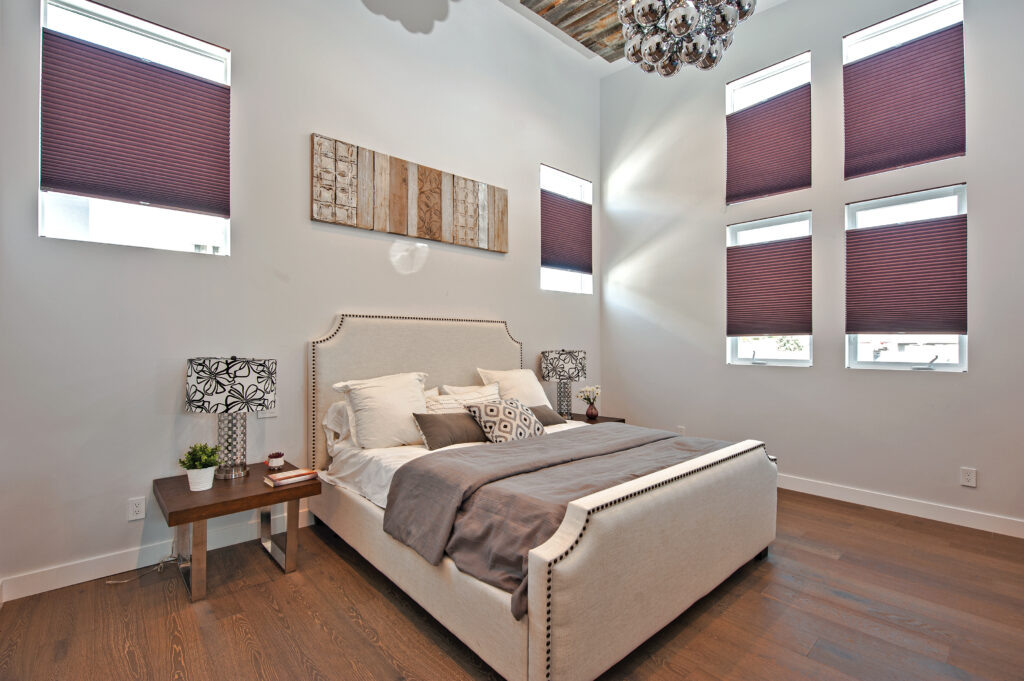Double vs. Single Cellular Shades: Which One is Right for You?

Discover the key differences between double and single cellular shades, their energy efficiency, and cost benefits. Find out which option best suits your home.
When choosing the right window treatment for your home, every decision can make a difference in comfort, style, and savings. One of the most debated choices is between double cellular and single cellular shades. While they may look similar at first glance, the distinctions between them can impact energy efficiency, insulation, and overall value. Understanding these differences will help you make an informed choice that enhances your home’s atmosphere and lowers utility bills.
If you’ve ever felt a draft coming through your windows in winter or noticed excessive heat creeping in during summer, your window coverings could be a contributing factor. Cellular shades, often called honeycomb shades, are specifically designed to trap air and regulate indoor temperatures. But should you opt for single or double cellular shades? Let’s explore the differences and benefits so you can choose the perfect fit for your needs.
Understanding Cellular Shades
Cellular shades are a popular choice for homeowners who want a balance between aesthetics and functionality. Their unique honeycomb structure creates air pockets that act as insulation, keeping rooms cooler in summer and warmer in winter. This design helps reduce energy consumption and can even lead to lower utility bills.
Single cellular shades have one layer of honeycomb cells, while double cellular shades feature two layers stacked on top of each other. This structural difference plays a major role in insulation, durability, and cost.
Energy Efficiency: Which Provides Better Insulation?
One of the main reasons people choose cellular shades is for their energy-saving benefits. According to the U.S. Department of Energy, windows account for 25%-30% of residential heating and cooling energy use. Cellular shades help counteract this loss by creating an insulating barrier.
- Single Cellular Shades: Provide moderate insulation, making them a good option for mild climates where extreme temperatures aren’t a concern.
- Double Cellular Shades: Offer superior insulation due to their dual-layer design, reducing heat loss by up to 60% in winter and blocking out up to 80% of solar heat in summer.
For those looking to maximize energy efficiency, double cellular shades are the clear winner.
Cost Considerations: Are Double Cellular Shades Worth the Investment?
Cost is a crucial factor when selecting window treatments. While double cellular shades provide better insulation, they also come at a higher price.
- Single cellular shades are more affordable, making them a budget-friendly choice for homeowners looking to improve energy efficiency without a significant upfront investment.
- Double cellular shades are typically 15-30% more expensive, but they provide long-term savings by reducing energy costs more effectively.
If you plan on staying in your home for years and want maximum efficiency, the extra cost of double cellular shades may pay off in lower energy bills over time.
Light Control & Privacy: Which Offers More Versatility?
Both single and double cellular shades come in a variety of opacities, from sheer to blackout, allowing you to control how much light enters a room.
- Single cellular shades: Ideal for rooms where moderate light filtration is needed, such as kitchens and living rooms.
- Double cellular shades: Better for bedrooms and media rooms where complete darkness and enhanced privacy are preferred.
The extra layer in double cellular shades also helps with noise reduction, making them a great choice for urban environments or noisy neighborhoods.
Durability & Maintenance: Which Lasts Longer?
Durability is another important factor to consider. The construction of double cellular shades makes them inherently stronger and more resistant to wear and tear compared to single cellular shades.
- Single cellular shades: Easier to clean due to their simpler structure but may wear out faster over time, especially in high-traffic areas.
- Double cellular shades: More durable and better at maintaining their shape, making them a longer-lasting investment.
Style & Aesthetics: Which Looks Better?
Both single and double cellular shades are available in a wide range of colors, textures, and patterns, allowing you to match them to your interior decor.
- Single cellular shades: Have a slimmer profile, making them a better choice for smaller windows or minimalistic aesthetics.
- Double cellular shades: Provide a more substantial look, adding depth and a structured appearance to your windows.
Choosing the Right Cellular Shade for Your Home
The best choice depends on your specific needs. If you live in a region with extreme temperatures, double cellular shades will provide the best insulation and energy savings. However, if you’re looking for a cost-effective solution with decent insulation, single cellular shades may be the right fit.
Final Thoughts: Making the Smart Choice
Choosing between single and double cellular shades ultimately comes down to energy efficiency, budget, and personal preference. If long-term savings and superior insulation are your top priorities, double cellular shades are the way to go. If affordability and moderate insulation meet your needs, single cellular shades can still provide significant benefits.
What matters most to you—initial cost savings or long-term energy efficiency? Your choice can make a big impact on your comfort and energy expenses for years to come.
Some blogs are written by authorized members of our marketing team for marketing purposes only. Some content may not correctly depict product specifications and may vary depending on the product. For more information, please call our sales office.